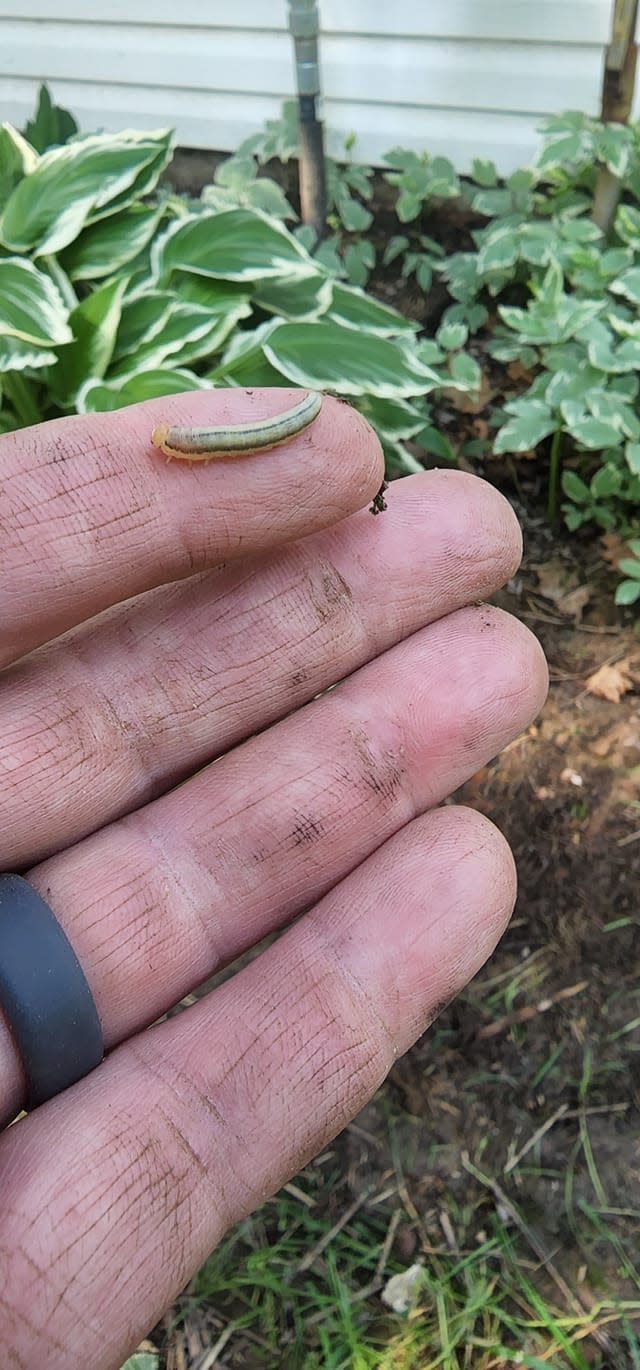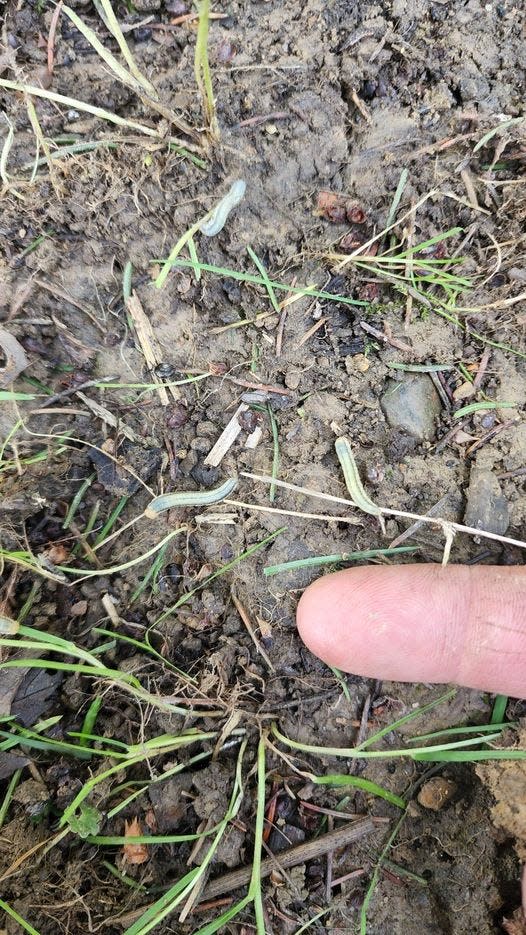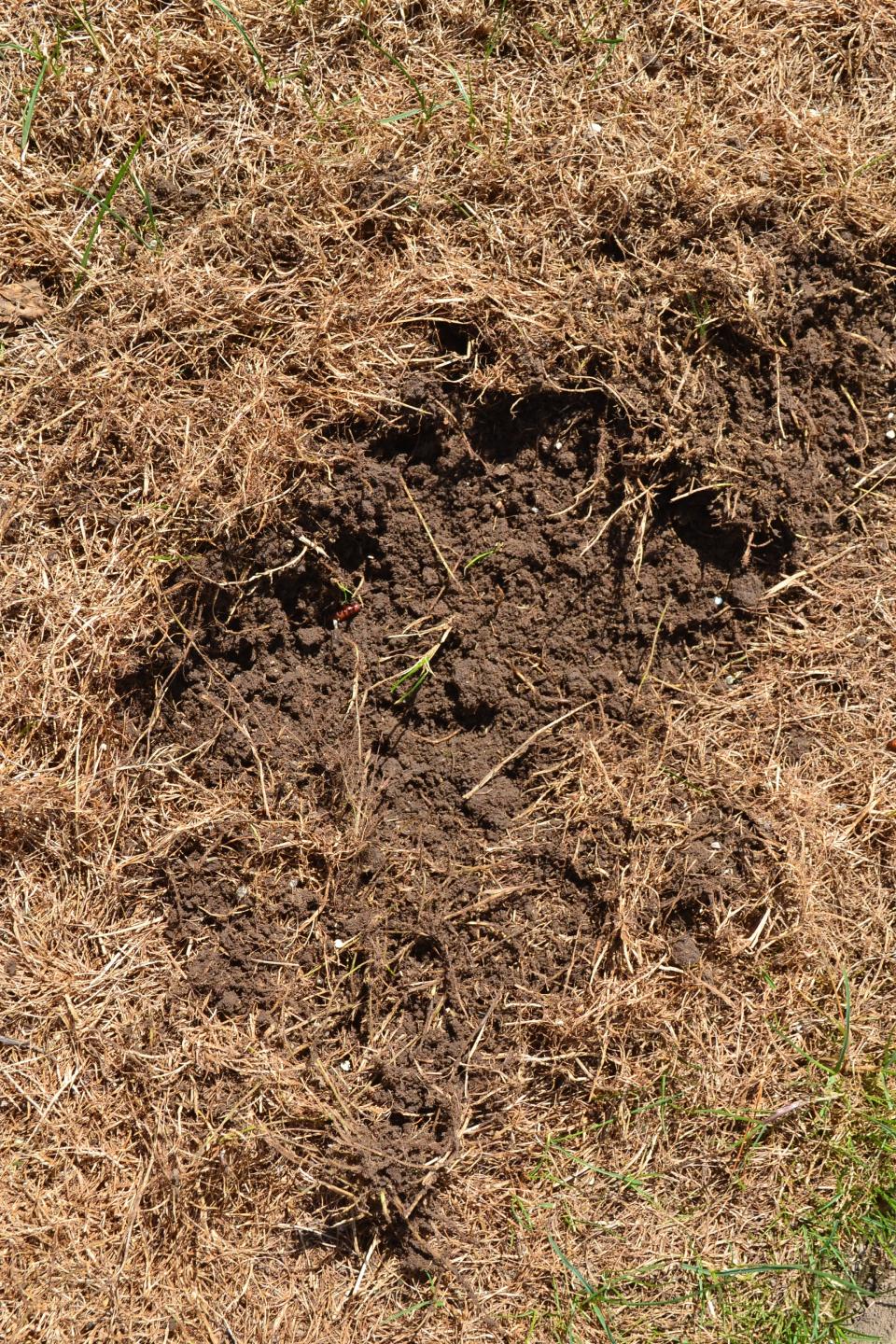A Stroll Through the Garden: The battle against armyworms continues

I had a friend who posted a question about identifying a caterpillar on his Facebook feed last week. From what I could tell, this caterpillar looked like an armyworm to me.
Maybe, if we are better prepared for this invasion, we can do better to manage this insect with early identification. I’m not so sure that these insects made a long journey that came up from down south. This person asked me what they could do about the armyworm in their yard. I said I don’t usually make snap decisions about such things, and I prefer taking a good close look and do my best to make sure that the solution I would have for this person would be the right one. If you have been following my column for some time, you will know that I go through a process. Because this caterpillar is a tropical insect, I would hope that this caterpillar did not overwinter.
Last year I went to a person’s yard hoping that I would find one of the caterpillars of the armyworm. Didn’t find one last year. The damage done in the yard was just like what you would expect from the armyworm, which is a good indication that something was going on in the yard all by itself.
When I started to dig up the lawn where you could see the damage — one of the three spots that I worked up — I did find a pupa of an armyworm. This gives me a chance to make a proper conclusion.

This is unlike the inquiry I got this year. My friend from East Rochester took care of that issue as he put pictures of these caterpillars on his Facebook page. No question about it — armyworms.
Use a 5-gallon pail of water with some dish soap on top to drive the caterpillars out of the soil. This will give you a chance to figure out if you have armyworms in the dead spots in your lawn. You can pour dish soap and water on your yard to confirm that you have this insect first before any solution is applied.
Armyworms can do a lot of damage

Fall armyworm, or Spodoptera frugiperda, is a member of the butterfly family and can damage many different crops including lawns. One of the few things I like about this insect is that if the temperatures get down below freezing at any time, all of them will maybe die off. Good news right! Most of the serious damage from these insects are limited to the south. What is so strange is that these insects can damage lawns in southern Canada seasonally. When we get a low coming up from the Gulf of Mexico, there is a possibility of us getting some of these insects in our yards. Armyworms have been noted to eat 80 different plants — 30 plants that we buy, mostly grains like corn and grasses.
The fall armyworm’s life cycle is completed within 30 days during the summer and 60 days during the spring and autumn seasons. Each female will typically lay about 1,500 eggs. These eggs cannot survive the winter supposedly but will hatch out into larvae in a few days. Females lay their eggs preferably under leaves. Larvae go through six stages of growth called instars and is the most destructive stage of this insect’s life. This larvae stage lasts from 14 to 30 days. Our armyworm pupa stays in this stage from 7 to 37 days in a cocoon. The adults live from 10 to 21 days. The adults are nocturnal and do the best during warm and humid nights.

If you have a huge infestation of these little monsters and the word gets out, you will see many invertebrates and vertebrates pursue them. Birds, rodents, beetles and earwigs prey on the armyworms. What I liked to read about is how a local organization was taking on the armyworms with turkeys and the turkeys truly enjoyed their work of eating these worms. One indicator of a problem with these insects is that you may have an overhead powerline loaded with these birds and you wonder what is going on. This column will have to continue next week.
Hope that all of you have a great stroll through your garden. If you are challenged by what you see, drop me an email at ericlarson546@yahoo.com. I shall do the best I can to answer the questions you would bring to me. Soon I shall be blogging and leaving a link for you to have a chance to comment at ohiohealthyfoodcooperative.org. Thank you for participating in our column.
Eric Larson of Jeromesville is a veteran landscaper and gardening enthusiast and a founding board member of the Ohio Chapter of Association of Professional Landscape Designers.
This article originally appeared on Mansfield News Journal: A Stroll Through the Garden: Combating armyworms in your yard

